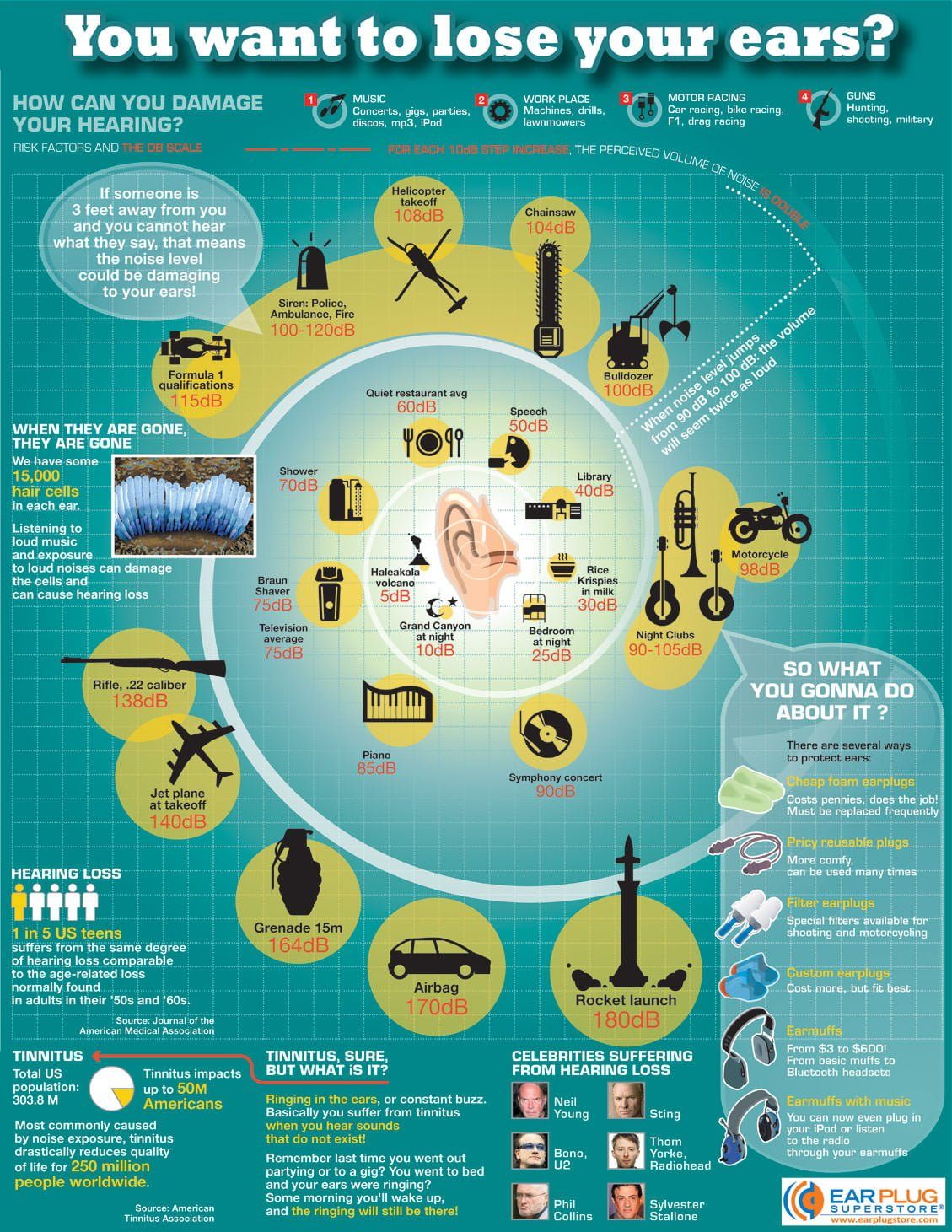Most people don’t talk about it; many live with it and it really frustrates them; some can’t sleep or relax because of it. Tinnitus — a ringing, whooshing or roaring in the ears can become a constant torment. It is one of the most common medical conditions in the U.S., affecting one in 10 adults.
While tinnitus has many different causes, the most common is noise damage to the auditory system. Combined with the natural effects of aging, this can contribute to tinnitus, often beginning in one’s forties or fifties. Being subjected to constant noise of any kind above 85 decibels (the sound of a lawn mower or hair dryer), may cause permanent damage to the auditory system and tinnitus. In terms of noise damage, both the loudness and duration of sounds play a role. If you’ve spent years listening to amplified music, attending concerts, using power tools, or working in a noisy environment chances are, those activities have taken a toll on your auditory system.
Some notice their tinnitus occasionally and the effects are mild. But for others, it can seem very loud, affecting their ability to concentrate, work and sleep, contributing to anxiety, stress, and depression.
Unfortunately patients seeking help are often told, “nothing can be done” or “you just need to relax,” even by medical professionals. Furthermore, because tinnitus is an invisible condition, patients often feel that others don’t really understand the extent of their suffering.
The good news is tinnitus can be managed, and many people do successfully find relief. Finding ways to relax and take one’s mind off the tinnitus is helpful since focusing on the tinnitus sound has a tendency to make it seem worse. A wise first step is to seek a qualified audiologist who is trained to treat this condition. If one has tinnitus combined with hearing loss, then a hearing aid may help. The amplification provided by a hearing aid allows the patient to hear more ambient sound, thus providing other things to listen to, and a distraction from the tinnitus.
For those without bothersome hearing loss, or who do not wish to wear a hearing aid, therapeutic sounds may also be played through tabletop speakers, or even special pillows with speakers embedded in them to help patients fall asleep. There are also handheld devices with separate earphones that play specific types of treatment tones such as gentle music or white noise that makes a “shhh” sound.
Other treatment tones known as Serenade S-Tones were developed at the University of California, Irvine by hearing researchers seeking a solution for tinnitus patients. These S-Tones were found to be effective even when played very softly, allowing patients to continue normal daily activities such as reading, working, or watching television while listening.
Everyone is different, so the best approach is to see a professional, and try various options to see what works best. What helps one person may not work for another, as this is the nature of tinnitus. And beware of “miracle cures” or solutions that guarantee instant relief, as these may not be clinically proven.

Hearing Loss Infographic
Image Source: So, You Want to Lose Your Ears?
References: doi: 10.1097/01.HJ.0000390817.79500.ed